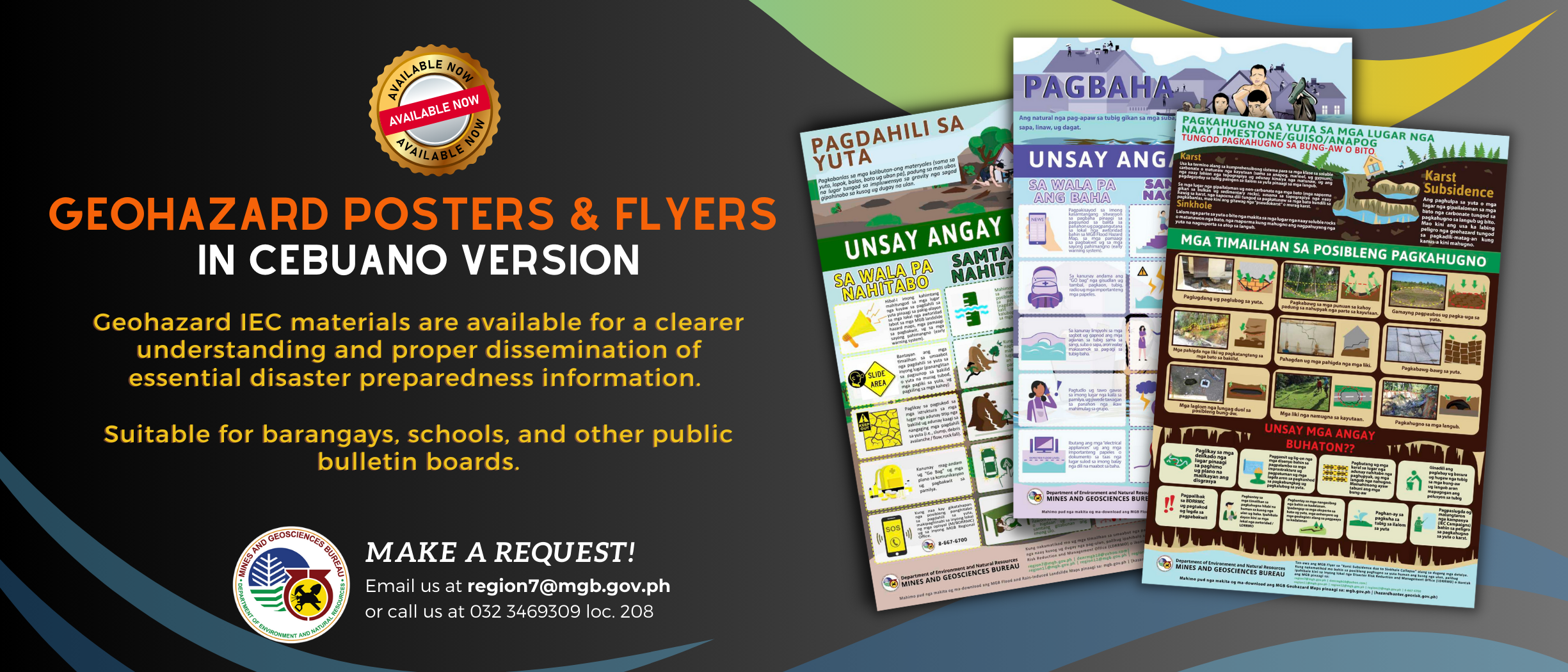Considering the heavy rains that go along typhoon Pablo, the Mines and Geosciences Bureau (MGB) 7 of the Department of Environment and Natural Resources (DENR) has urgently reiterated its call on the local officials and communities to revisit the landslides and flooding advisories issued to them.
MGB-7 Regional Director Loreto B. Alburo made the appeal following a warning from the Philippine Atmospheric, Geophysical and Astronomical Services Administration (PAGASA) that an Ondoy-like rain with a gustiness of typhoon Ruping is expected to hit Cebu and the rest of the Visayas and Mindanao areas.
“The high flooding susceptibility are due to proximity to perennial river creek system, poor drainage facility, inherently low lying area, proximity to coastal area, heavily silted river or creek, and encroachment along natural drainage channels,” he added.
Flooding occurs when the level of a body of water rises until it overflows its natural or artificial confines and submerges land in the surrounding area due to intense and prolonged precipitation and other geologic factors.
Meanwhile, Alburo also issued today features that might be noticed prior to major land sliding and these include springs, seeps, or saturated ground in areas that have not typically been wet before; new cracks or unusual bulges in the ground, street pavements or sidewalks; soil moving away from foundations; ancillary structures such as decks and patios tilting and/or moving relative to the main house; tilting or cracking of concrete floors and foundations; broken water lines and other underground utilities; and leaning telephone poles, trees, retaining walls or fences.
He also urged local chief executives to get hold of the geohazard maps, and implement the necessary measures to reduce the impact of landslides and flooding within their areas of responsibility.
“Areas which have been declared as “highly susceptible” to either landslides or flooding, and “no habitation” zones should be strictly carried out by the local chief executives,” he added.
In Cebu City, 19 barangays are highly susceptible landslides, namely, Lusaran, Binaliw, Guba, Budlaan, Malubog, Buot-Taup, Busay, Sirao, Taptap, Tagbao, Tabunan, Pung-ol Sibugay,Sudlon II, Sudlon I, Sinsin, Buhisan, Pamutan, Sapangdaku, and Adlaon. Barangays Tagjaguimit, Alpaco, Balirong, Mayana, Naalad, and Cogon in City of Naga.; 11 barangays in Balamban: Hingatmonan, Lamesa, Luca, Ginatilan, Cabasiangan, Matun-og, Cansomoroy, Gaas, Magsaysay, Cabagdalan, and Duangan; Five barangays in Toledo City: Tungkay, Pangamihan, Bagacay, Loay and Don Andres Soriano; Lamac in Pinamungahan; Five barangays in Asturias:Agbanga, Baye, Bairan, Kanluangan and Sak-sak; 12 barangays in Catmon: Amancion, Anapog, Bactas, Bongyas, ambangkaya, Cabungaan, Can-ibuang, Duyan, Ginabucan, Panalipan, Tabili and Tinabyonan). all mountain barangays in Talisay City; Brgy. Doldol, Purok 3 in Dumanjug; and Cansalonoy in Ronda.
Alburo said the assessment reveals that there are five barangays in Cebu City that are considered to be most hazardous to flooding and these are Kasambagan, Kinasang-an, Labangon, Mabolo, and Bonbon; and seven barangays in Mandaue City to include Subangdaku, Mantuyong, Umapad, Opao, Alang-alang, Guizo, and Pakna-an.
In a related development, Alburo notified all operating mines and quarries in region 7 to extend the necessary assistance should the need arises.






